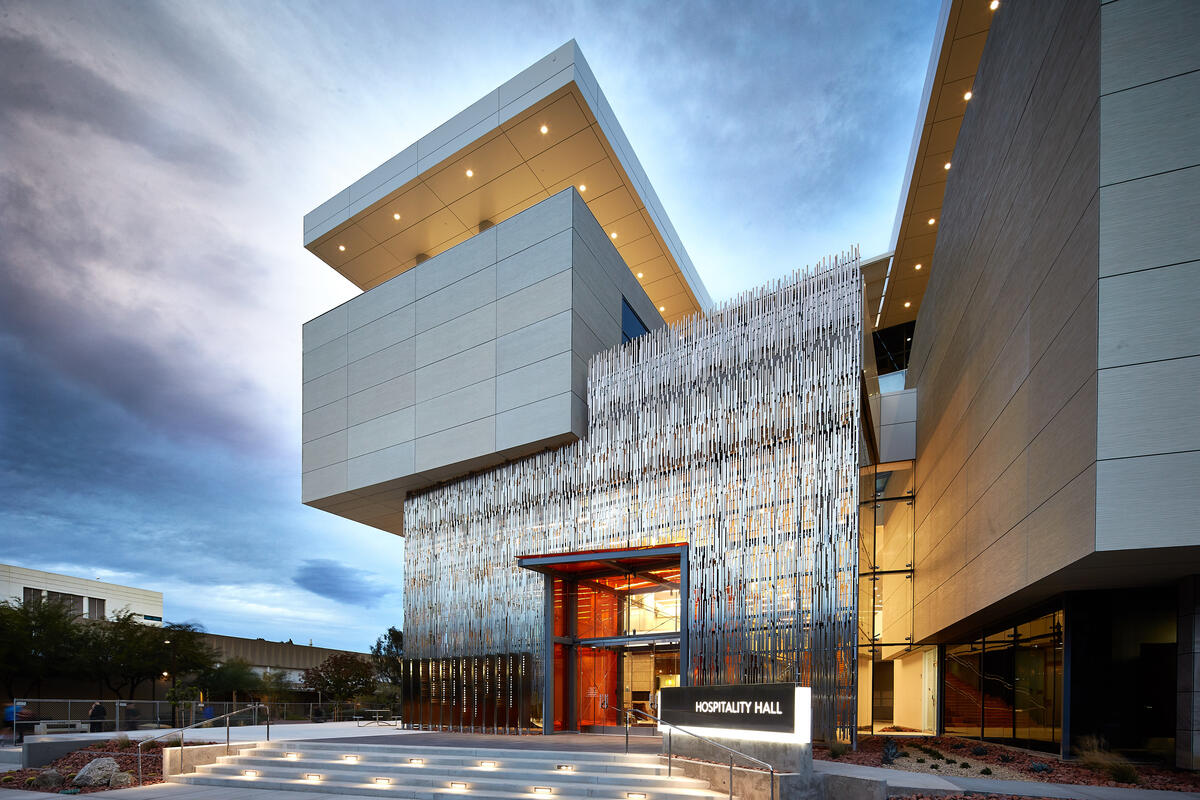
Design, Construction, and Sustainability
Design, Construction, and Sustainability Standards
Contact Planning and Construction at PCInfo@unlv.edu or 702-895-2500 to request PDF files of the university’s design, construction, and sustainability guidelines and standards. Topics covered in these documents include standard procedures for submittals of the different phases of a project, standard design elements, suggestions for environmentally friendly considerations within a project, and guidelines for technical details in a project.
LEED Certified Buildings
LEED (Leadership in Energy and Environmental Design) is the most widely used green building rating system in the world. It is based on the idea that the built environment can have profound effects, both positive and negative, on the natural environment, as well as the people who inhabit buildings every day. Green building is an effort to amplify the positive and mitigate the negative effects throughout the entire life cycle of a building. LEED certification is a globally recognized symbol of sustainability achievement and leadership for healthy, highly efficient, and cost-saving green buildings.
- Greenspun College of Urban Affairs (Gold Certified)
- Science, Engineering & Technology B (Silver Certified)
- Hospitality Hall (Silver Certified)
- Medical Education Building (Registered)
- Desert Solar Decathlon Building (Registered)






Capital Planning Process
Call for Submissions
UNLV conducts a call for submittals every two years for major capital projects and an annual one-time project prioritization process to assign funds to projects considered high priorities for the campus.
The process for both begins with the call for submittals sent to all executive leadership for internal proposal development and vetting. Once submitted, the proposals are collected and prioritized by the campus executive area, reviewed, and refined by the UNLV Space Committee, appropriate safety committees, the UNLV Cabinet, and the UNLV president.
Upon presidential approval, certain priorities within one-time projects are subject to review and approval by the NSHE Board of Regents. All major capital projects are subject to review by the NSHE Board of Regents and are prioritized within the overall NSHE major capital projects plan.
Funding
Those projects with a state funding component are then prioritized by the state of Nevada Public Works Board within the state of Nevada Capital Improvement Plan where approval by the governor can be made. Planning and Construction provides required support to the entities involved in the capital planning process.
Combined Major Capital Project and One-Time Project Process
The FY14 UNLV Combined Major Capital Project and One-Time Project Process (COPP) commenced as of September 11, 2013. The COPP is an institutional process conducted to understand and prioritize campus major capital project requests and one-time needs/proposals. Through receiving submittals from all areas of the institution for these project requests, it is intended that a comprehensive understanding of needs throughout the institution is developed and prioritized to support institutional planning and funding processes and to assign available resources to the highest priority items within funding constraints and strategies.